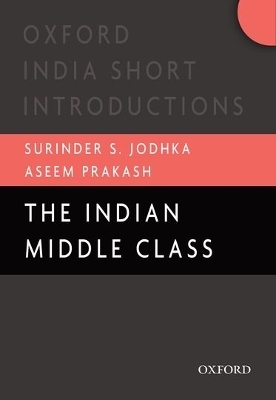
Indian Middle Class
Seiten
2016
OUP India (Verlag)
978-0-19-946679-5 (ISBN)
OUP India (Verlag)
978-0-19-946679-5 (ISBN)
The Indian middle class is complex, influenced by colonial history, caste, ethnicity, region, religion, and gender. It holds societal legitimacy but has exclusionary politics, leading to conflicts. Despite its elusive nature, lower classes aspire to join it.
Who exactly are the middle classes in India? What role do they play in contemporary Indian politics and society, and what are their historical and cultural moorings? The authors of this volume argue that the middle class has largely been understood as an income/ economic category, but the term has a broader social and conceptual history, globally as well as in India. To begin with, the middle class is not a homogeneous category but is shaped by specific colonial and post-colonial experiences and is differentiated by caste, ethnicity, region, religion, and gender locations. These socio-economic differentiations shape its politics and culture and become the basis of internal conflicts, contestations, and divergent political worldviews. The authors demonstrate how the middle class has acquired a certain legitimacy to speak on behalf of the society as a whole, despite its politics being inherently exclusionary, as it tries to protect its own interests. Further, perceived as an aspirational category, the middle class has a seductive charm for the lower classes, who struggle to shift to this ever elusive social location.
Who exactly are the middle classes in India? What role do they play in contemporary Indian politics and society, and what are their historical and cultural moorings? The authors of this volume argue that the middle class has largely been understood as an income/ economic category, but the term has a broader social and conceptual history, globally as well as in India. To begin with, the middle class is not a homogeneous category but is shaped by specific colonial and post-colonial experiences and is differentiated by caste, ethnicity, region, religion, and gender locations. These socio-economic differentiations shape its politics and culture and become the basis of internal conflicts, contestations, and divergent political worldviews. The authors demonstrate how the middle class has acquired a certain legitimacy to speak on behalf of the society as a whole, despite its politics being inherently exclusionary, as it tries to protect its own interests. Further, perceived as an aspirational category, the middle class has a seductive charm for the lower classes, who struggle to shift to this ever elusive social location.
Surinder S. Jodhka is Professor, Centre for the Study of Social Systems, Jawaharlal Nehru University, New Delhi, and Senior Affiliate Fellow at the Centre for Social Sciences and Humanities, New Delhi, India. Aseem Prakash is Professor and Chairperson, School of Public Policy and Governance, Tata Institute of Social Sciences, Hyderabad, India.
Preface; Acknowledgements; Introduction; 1. What Does It Mean to Be Middle-Class?; 2. The Formative Years; 3. The Age of Development and Nation-Building; 4. Transforming India, from Above; 5: The Contemporary Dynamics and Number Games; 6. Consuming Identities and Exclusionary Powers; 7. Diversities and Margins; Conclusion; References; Index
| Erscheinungsdatum | 27.06.2016 |
|---|---|
| Verlagsort | New Delhi |
| Sprache | englisch |
| Maße | 128 x 185 mm |
| Themenwelt | Sozialwissenschaften ► Soziologie ► Makrosoziologie |
| ISBN-10 | 0-19-946679-3 / 0199466793 |
| ISBN-13 | 978-0-19-946679-5 / 9780199466795 |
| Zustand | Neuware |
| Informationen gemäß Produktsicherheitsverordnung (GPSR) | |
| Haben Sie eine Frage zum Produkt? |
Mehr entdecken
aus dem Bereich
aus dem Bereich
queere Heldin unterm Hakenkreuz
Buch | Hardcover (2023)
Kremayr & Scheriau (Verlag)
CHF 33,55
deutsch-jüdische Lebensgeschichten
Buch | Hardcover (2024)
Wallstein Erfolgstitel - Belletristik und Sachbuch (Verlag)
CHF 67,20


